The continuing drought in California and the Western United States has made it necessary for all of us, no matter where we live, to find ways to save precious water. Now that our three sons are out of the house, Lori and I decided that the removal of some grass in our yard would be a start. We could remove grass in a sunny backyard area as a test, and as an added bonus use the newly-cleared space for growing less water intensive, sun-loving vegetables and flowers.
The main problem we had to tackle, aside from the labor required to dig out and dispose of the turf, was how to prevent the grass from growing back and weeds from encroaching on the exposed area. We considered a number of options to eliminate grass including initial removal and continuing weeding, herbicides, tilling, weed cloth, cardboard and newspapers.
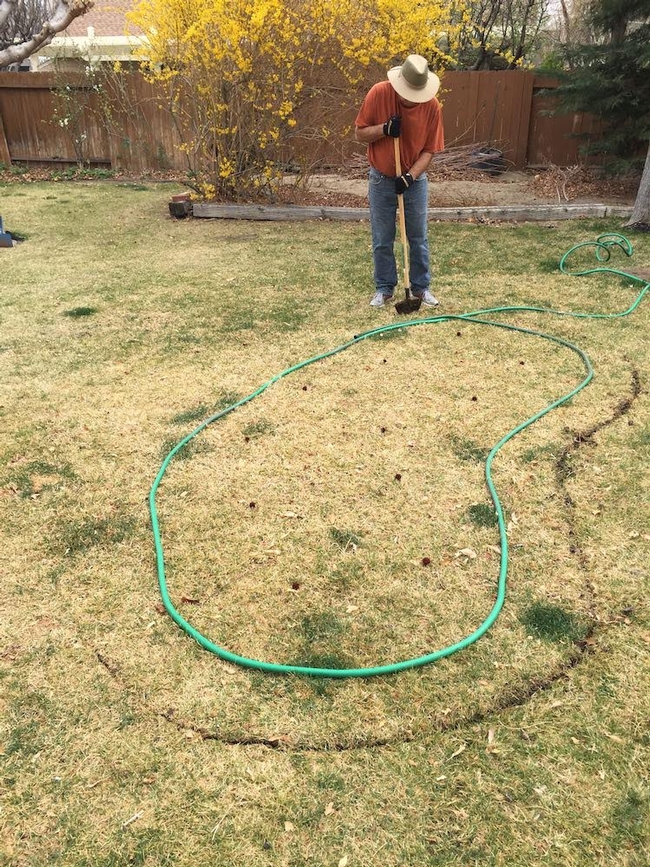 3/17/15: Cutting grass around hose used to mark test area. |
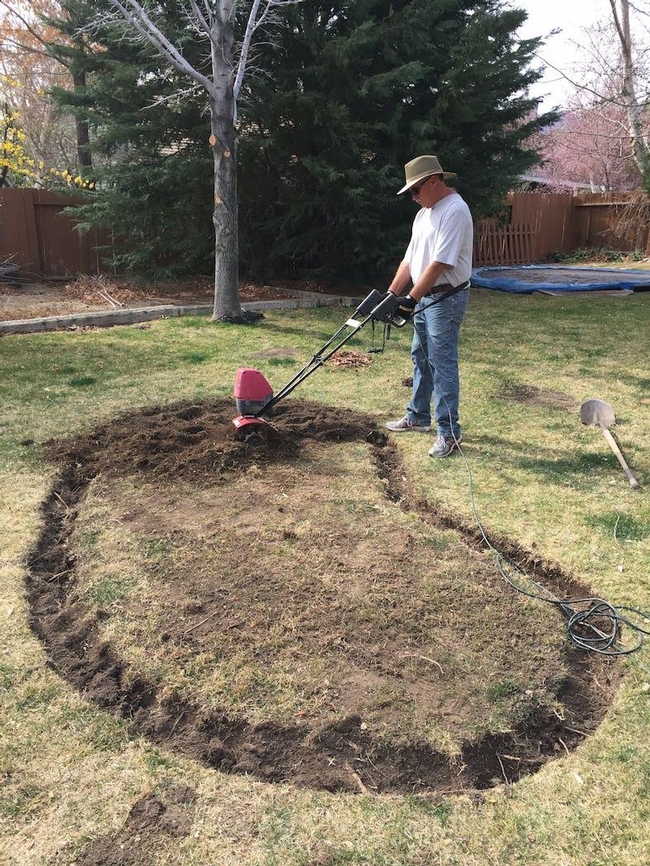 3/18/15: Tilling area prior to applying newspaper. Note dug out perimeter. |
|
Each of those options brings with it its own advantages and disadvantages which had to be weighed. Continuing weeding to (hopefully) keep grass at bay would be a pain in the neck—and back—and we saw little upside in this option. Herbicides would probably get rid of the grass, but would probably require several applications. Most importantly to me, they are not good for the environment and any future planting we wanted to do, including vegetables. Tilling can harm the natural soil texture, spread seeds and chop up grass into small pieces that can grow. Weed cloth would probably work but it's expensive. Cardboard would probably work too but it's difficult to work with. Old newspapers reportedly work well and they are readily available from the local newspaper office for nothing, and using them carries the added benefit of recycling.
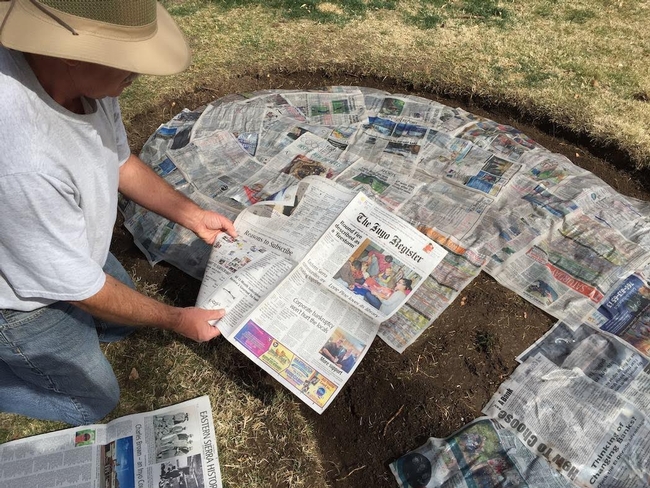
First we needed to select a location where the lawn would be removed. Because we have so many trees in the backyard that shade a lot of area, we selected a location in the middle of the yard that gets as much sun as possible. We wanted to have a sunny location where vegetables and flowers would grow well.
We began the test in mid-March 2015 hoping to get the new area ready to plant before summer. I started by outlining a spot on the lawn using a hose and then proceeding to remove the grass. First I used a cutter to make a nice edge along the hose. I then dug out the edge of the grass inside the cut to a full shovel depth, about six inches. This has the added benefit of minimizing the infiltration of adjacent grass as it cannot easily cross the open space. Next I tilled the grass in the rest of the area, and raked and pulled as much leftover grass as I could.
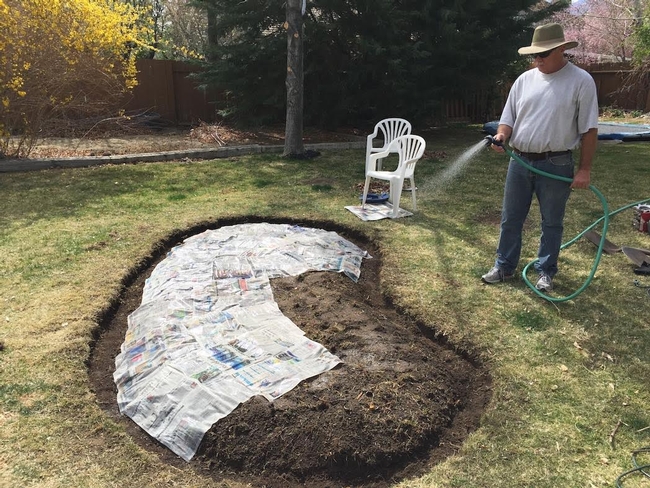
In mid-April we took on the task of getting water to the new planting area. We decided to tap into an existing drip irrigation line that's on a timer and about 25 feet away. I used the cutter to make a line in the grass then dug down and peeled back the grass leaving it attached at one edge to facilitate putting it back once I'd made the water connection. I then dug a trench about 12 inches deep. It was a bit tricky cementing the new connection to the existing pipe which was about two feet deep. Once I had made the connection I ran pipe in the ditch and covered it with the dirt I'd removed and the grass I'd peeled back. Finally Lori connected a drip irrigation system to the new pipe and put heads where we were going to plant.
Then we got to plant! We waited until early May hoping to avoid freezing (it's all a matter of risk tolerance). Lori planted squash seeds, peppers, cucumbers, a gerbera daisy, marigolds and one dahlia tuber we had left over after planting 39 in our existing garden. We've had problems in the past with bugs eating our young plants so we put a fence around the area to keep the dogs out and then Lori sprinkled a bit of snail/earwig bait to give them a chance to grow strong and better survive a pest onslaught.
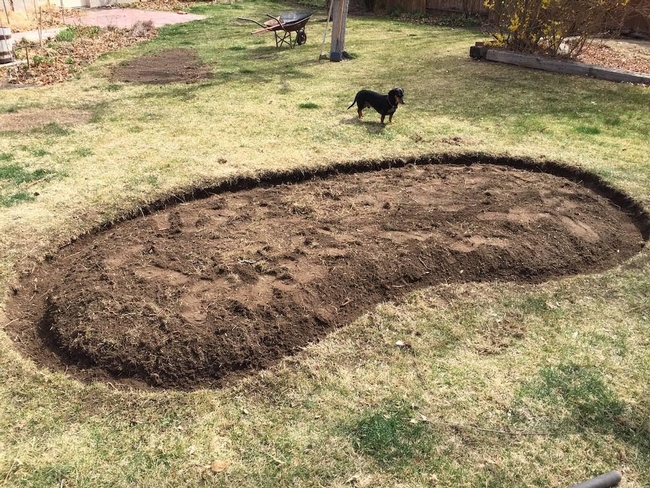 3/18/15: Test area with grass tilled, raked and removed, ready for newspapers |
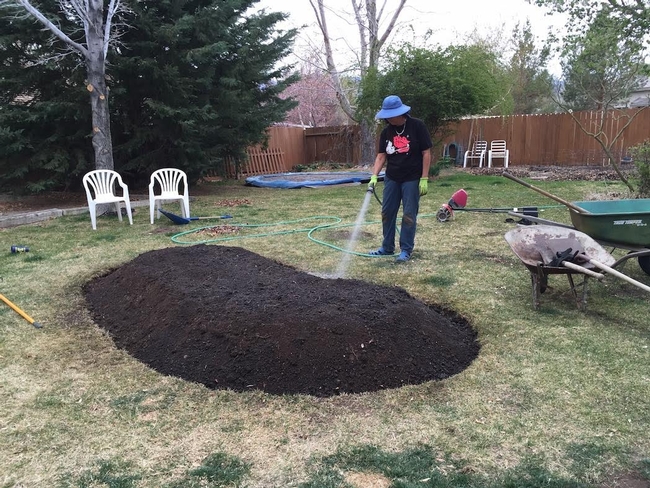 3/18/15: Ready to plant! Just waiting install the drip supply line and warmer weather. |
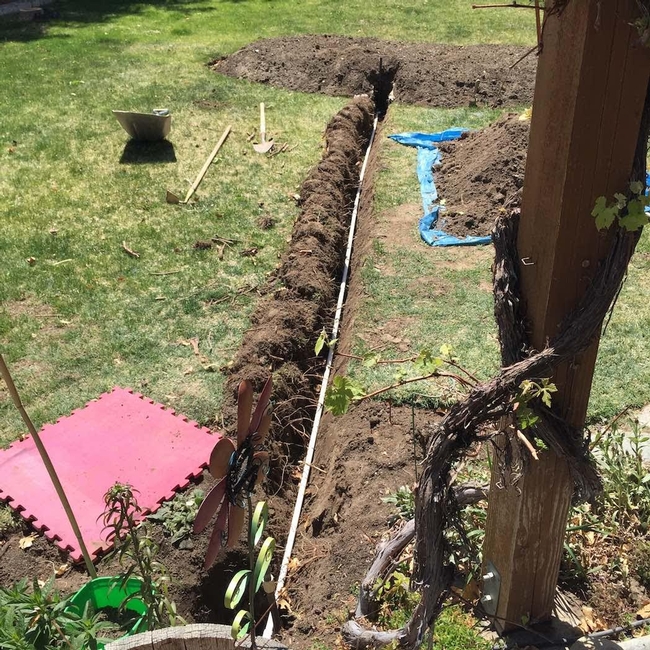 4/14/15: Trench dug and drip supply pipe installed and ready to backfill. Note the grass laid over to the left, making it easier to put it back where it came from. |
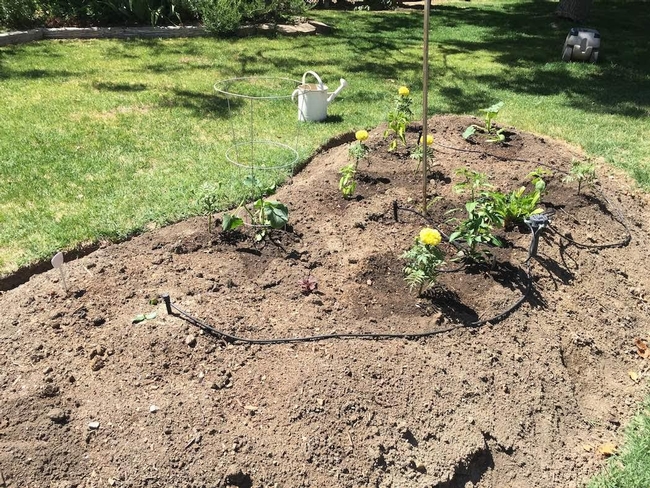 5/10/15: A few days after planting. No grass or weeds have come up. |
It's now June. Everything we planted is doing quite well. On May 26 Lori did some minor cleaning and mulching of the area and found minimal grass and weed infiltration. Since we created the new planting area very little grass has come up, and any that has mostly came from the surrounding grass, not through the newspaper. So, at this point I would call the test a success. I will update this report as the summer and fall growing seasons progress and we have a better handle on how successful the test has been. But, so far so good! If it continues to work this well we may remove more grass in the future using the same method.
I'll keep you posted.
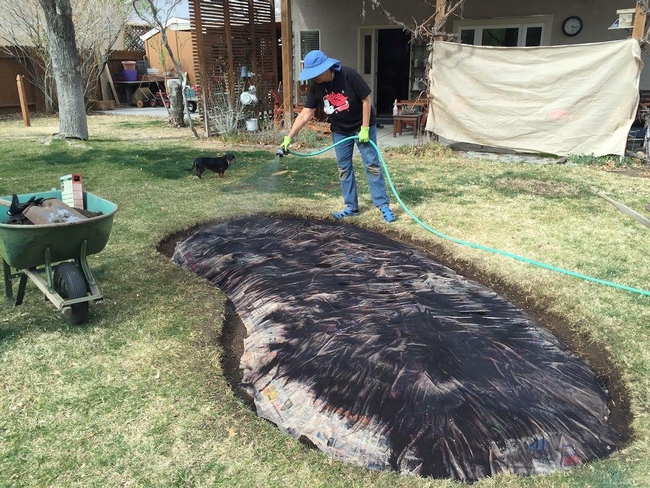 3/18/15: Lori wetting the blood meal spread on the newspapers. |
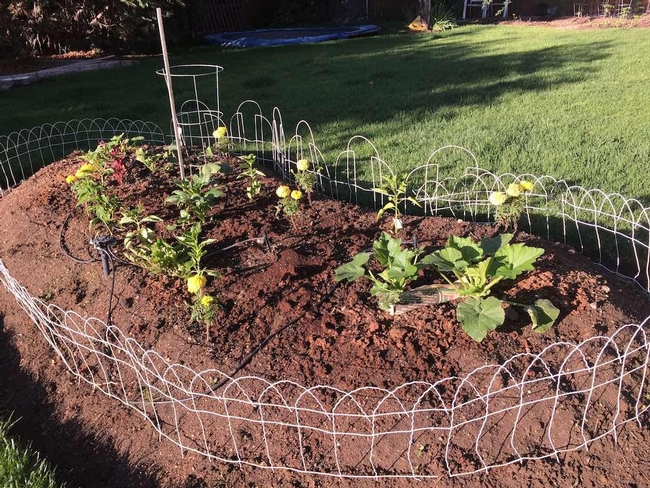 5/29/15: Looking good this morning! |